Kaokaland
Namibia / 18 - 21 September 2019
Camping with elephants roaming around the tent. The Community Campsite in the town of Puros is known for the fact that the beautiful wooded spot on the river is shared with the large mammals. It will be our place to sleep tonight.
We are first preparing for our adventure in the north-west of Namibia. A remote area without facilities. We calculate the number of liters of water we need for the journey of 6 days with a number of days reserve in the event of a breakdown. On the map we have counted out that we have 675 km tracks ahead. With two full diesel tanks we can survive until the next filling station. Sesfontein is the last place to top up the fuel. However, there is a sign that diesel is sold out. There is still diesel available in Puros, says a man hanging around. Fortunately both tanks were filled yesterday in Opuwo. Where we were against will and thanks.
Elephant camping
On the way to Puros we no longer encounter any cars. The varied landscape is only for us and the wild game. Giraffes with a pale fur color, adapted to the dazzling white landscape, nibble on the banks of the green trees.
In the afternoon we reach our destination and start looking for diesel. We indeed find three fuel barrels in a corrugated iron shed. We skeptically check the quality of this fuel. If the bottom of the barrel sparkles with a lamp, we are convinced that it is clean diesel. With our fuel tank supplemented with 40 liters, we reach the campsite. A young woman, still in a good mood, takes us to the campsite. "No, there are no elephants here," she helps us out of the dream. "Well, snakes," and she points to the broad tracks. The elephants left a month ago in search of water. To the north, we hope.
The deserted north
Few cars drive further into Kaokaland from Puros. The track is hard to find without clear tracks. Courage sinks into our shoes for a moment. 545 km to go in this way? The sand turns into pebbles and the path is more clearly marked. The landscape is very varied. Quite a challenge to describe. We recognize the stony military trails from the French Alps, the Australian desert with arid vegetation, and the vast plateau in Mongolia with a range of traces. It most closely resembles, uhh, a Namibian landscape. Stone hills with bare bushes and trees, wide river beds full of sand and with small and large stones. Hardly any green leaves. Living beings do not show themselves. It seems as if the elephants have left the area with the Himbas and the goats in their wake. The abandoned settlements bear witness to their existence. We are pleasantly surprised by two young Himba women with three children and two huts on a large deserted plain. They sell jewelry. I buy a pair of bracelets. And can hardly stop photographing them. That's how characteristic they look.
The sun has started the decline and we are looking for a place to stay in the landscape. Wild camping for the first time. We are in a flat place without trees and are welcomed by countless flies. When we are drinking beer, an older Himba shepherdess comes out of nowhere. She demands attention for her foot. She wants to cut open an old wound with a lot of meat growth, I understand from her gestures. I'm in a fight. At least it is not an open wound with a risk of infection. What is wisdom? I give her big plasters. She clearly shows that she finds no solution and continues shaking her head.
Heartbreak hill
We meet villages and locals with off-road cars for the first time. There are several roads at a junction, I steer to the right and we continue the D3703 on which we have been driving for a few days. I see a stone hill looming and I gladly hand over the steering wheel to Onno. We laugh at the name of the 'Heartbreak hill' hill. We are laughing quickly. Large boulders do not block the way, they are the way. The G balances on its four wheels in an attempt to get a grip and crawl up. For the co-driver, who gives directions outside, it looks spectacular when a wheel comes off half a meter. It is frightening for the driver not to see which wheels are in contact with the large pointed stones, but to feel the car tilt in all directions. If we think we've had the worst, the mountain has even more similar chilling track parts in store. Exhausted we reach a flat part where a car meets us. It turns out to be two German tourists in a rental car. The first tourists we see since Sesfontein. The man stops passing and urges us to turn around. He has completed the track ahead of us with great pain and effort. It was almost impossible to do. In turn, we warn him of the 6 km that we have traveled uphill. Downhill is easier, but it is also quite challenging. Both drivers do not worry about driving back. We continue on the mountain path where we cannot make much speed. Fortunately, the level of difficulty is considerably lower than the first part. We are often still in mind with the German driver.
Himba overnight
The entire track is only surrounded by leafless trees. It reinforces an image of dramatic drought. However, it is winter in which a number of tree species drop the leaves in July and grow again in October.
16 km to go until the intersection with the main road, we cannot save that before sunset. This time we find an open overnight place surrounded by trees near a river bed. We have not seen them, but hear the voices of Himbas in the evenings. The next morning exactly at 6.30 o'clock we are awakened by a shout from a Himba. Time to get up. While preparing the car for departure, Onno has the feeling that we are being watched. That turns out to be correct, from a distance a Himba is watching what we do, as a reality TV. The event of the week, probably.
Along the way we come across more Himbas. They live there and are not decked out extra nicely for the tourists. The red-dyed body with the hair twisted into strands also proves excellent camouflage. We only notice them when they are on the roadside a meter before our car. A shy girl with two bottles asks us for water. We want to fill two bottles with love, but only one is the intention.
Waterfalls
On the main road we can make good speed again, as far as the washboard allows. On the way to the Epupa waterfalls. We meet a Dutch couple in the parking lot, Gert and Charmaine, who also drives an off-road vehicle with a Dutch license plate. While Onno spontaneously makes espresso, we exchange our experiences with traveling around the world. Very cozy, and also informative.
Despite the drought, the waterfalls are still filled with a lot of water. A dam in Angola ensures a metered supply. A green oasis on either side of the border is the result.
The manager of the campsite on the Kunene River where we spend the night, Cornelius, has been living in the area for more than 30 years. He is very committed to the development of Kaokoland and its inhabitants. In the sparsely populated area, it is difficult to reach the Himba children to teach. The visions about the solutions are divided. Provide good nutrition first so that the brain develops, as a Euro parliamentarian propagates. Or educate the mothers and their children. In any case, the mobile buses, which offer no structure with their limited presence, and large school buildings in the middle-of-nowhere are not successful. The big drought in Namibia, according to Cornelius, has become a problem because the herds have become much too large. More goats, more revenue. That is also the motto of the Himbas, he believes. Marienfluss, a beautiful green valley in the north, is now completely bare. We can't talk about it, we missed the exit to the area.
When we are on our way the next morning, Gert and Charmaine's car appears in our rearview mirror. This time they offer us coffee in a Lodge. We are still far from speaking, we note when it is just two and a half hours later. If you share passions, time flies.
Leave a comment
Join the conversation?Feel free to contribute!


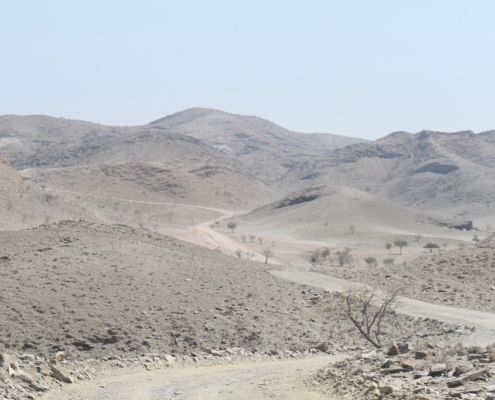
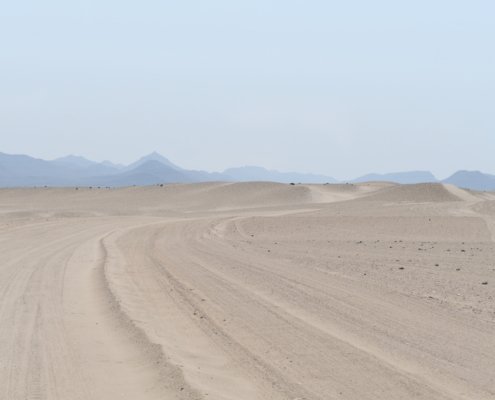


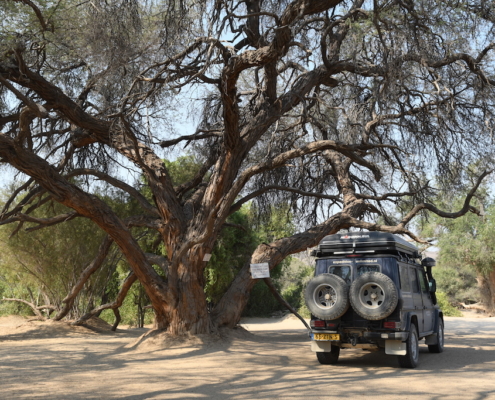
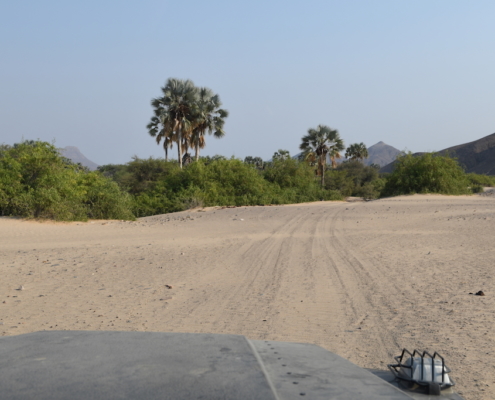
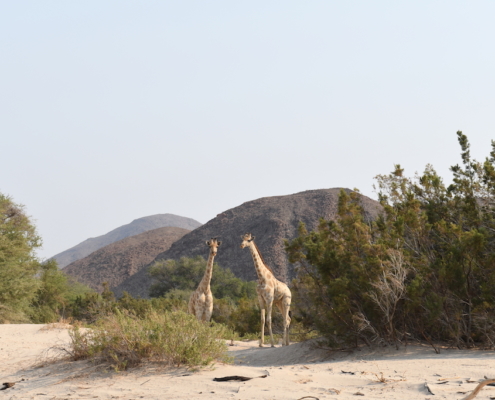
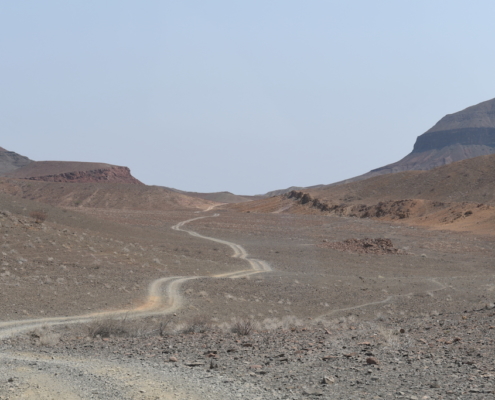
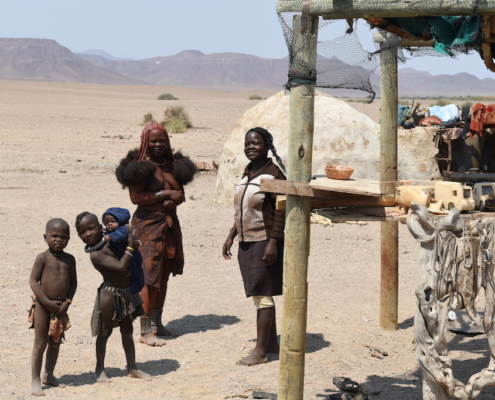
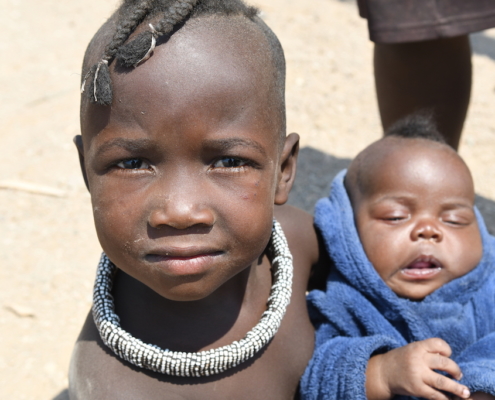
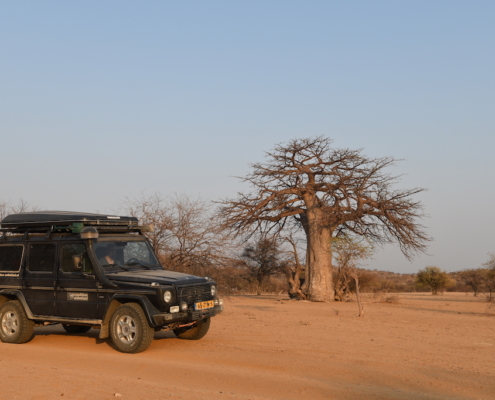
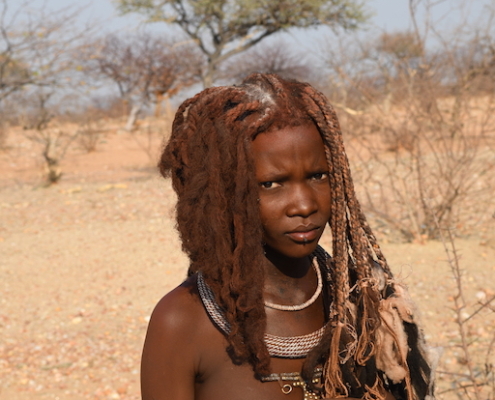
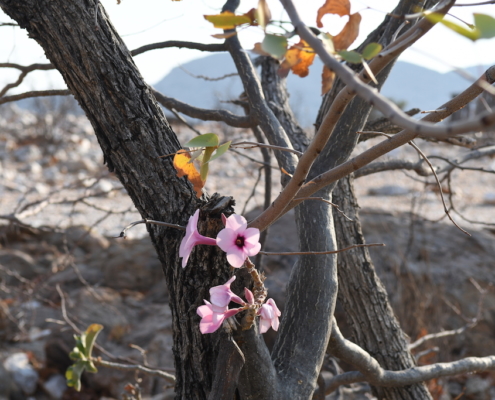
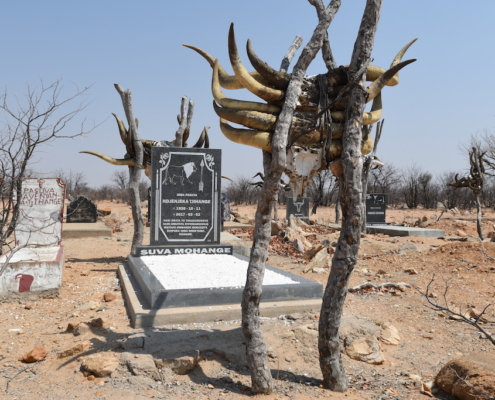
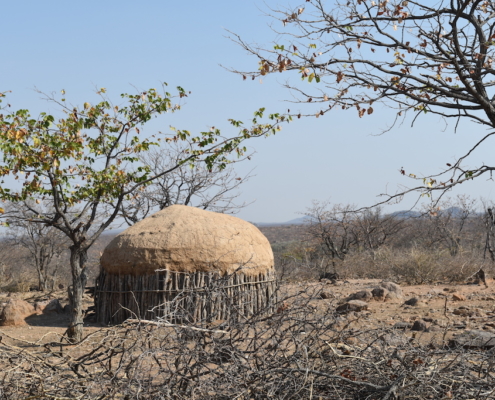
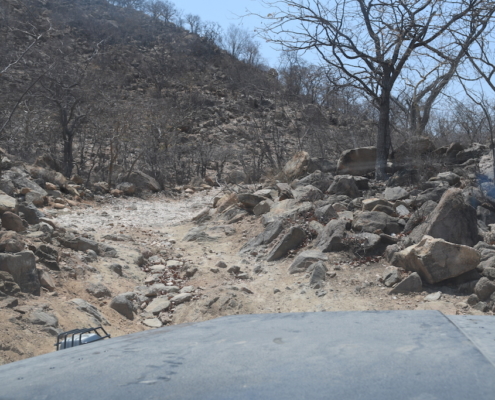
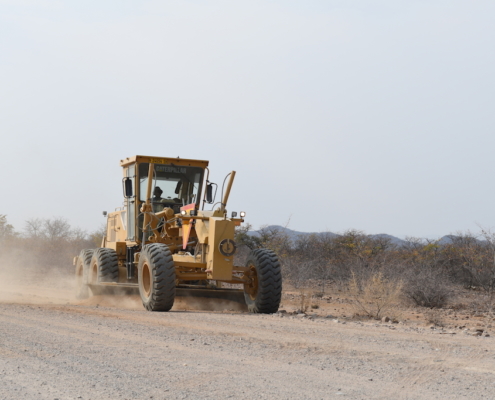
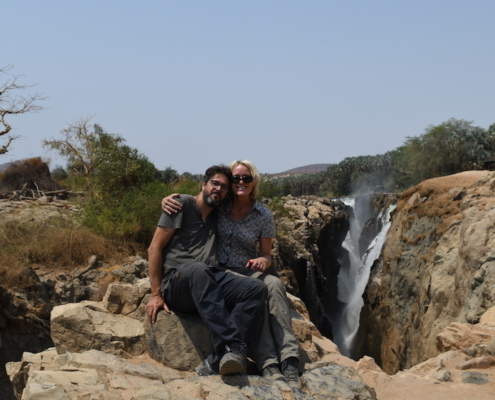
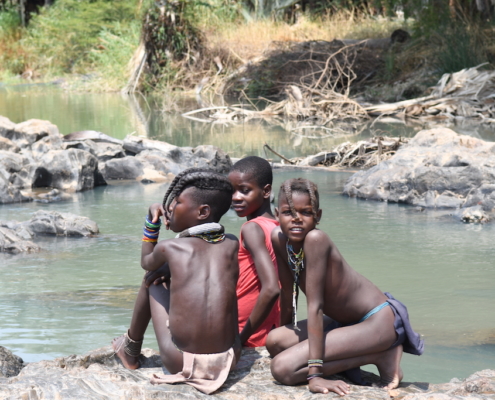


Very nice pictures and very nice written.
It's a good thing that now and then something unexpected happens, that gives the best stories. Stay sharp and above all enjoy the freedom. X Luc & Co
We fully agree with you: unexpected events are the most memorable. Just like the challenges that you have overcome. We hope to experience many more with it! We keep your guys posted. Greetings, also to Co.
The greatest adventures through the middle of nowhere, beautifully described.. and then again WiFi to be able to share them with us. Crazy world!?
For some things, such as that challenging mountain pass, we think: what have we started? But once it's over, it's a good story again. That's what it's all about: creating stories and gathering memories.
Greetings from Tsumkwe!